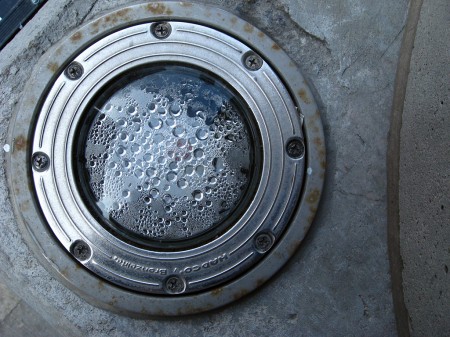
In environmental discussions, I frequently see people deriding ‘hair shirt’ environmentalism: basically, the idea that a sustainable society should involve self-sacrifice. There are libertarian sorts who assert their right to live as they wish, without interference. There are also strategic environmentalists who believe that (a) personal sacrifice is not strictly necessary and (b) only approaches that do not call for it will succeed on a societal level.
In order to get into the analysis of this a bit, I think it makes sense to separate three basic ‘hair shirt’ positions. Each holds that it is either necessary or desirable to cut down on some collection of conveniences:
Conserve or we’re doomed
The people of Easter Island didn’t stop their wars and stone head making because they were guilted into it by hippie sorts. They stopped because their ability to sustain a society failed. Conceivably, this could happen at the level of a contemporary state, a region, or the global society.
This viewpoint includes those who think runaway climate change is a major concern, either because it is likely or because the sheer destructiveness it would bring justifies extensive precaution even in the face of a low chance of occurrence. It also includes those who think that when oil runs out we will (a) be unable to locate adequate replacement forms of energy and (b) that this will make civilization impossible to sustain.
Harm Principle advocates
These people argue that libertarians are wrong to assert that one person’s choice to fly or drive is not the business of others. In particular, there is the welfare of those alive now who are vulnerable to climate change (especially in the Arctic, in megadelta, and in small island states). There is also the matter of future generations, and the argument that it is morally wrong to pass a damaged and diminished world on to them.
For these people, it is fine to keep consuming as much energy and as many goods as desired, provided the mechanisms through which they are produced, used, and ultimately disposed of do not cause morally unacceptable harm to others. Naturally, questions about what types and levels of harm are permissible are contested.
Moral minimalists
This group argues that living a simple life is a virtue unto itself. It is split between those who simply choose to adopt such a life themselves and those who argue that others should or must do likewise. In that sense, they are a bit like vegetarians; some try to convert people willingly, others assert that there is a universal moral requirement to be vegetarian, and some are happy to let others do as they wish.
I don’t think any of the views is entirely correct or entirely incorrect.
I do believe that there are ongoing societal behaviours that run a strong risk of undermining the material basis for society, over the long term. Most critical by far is climate change. Runaway climate change would almost certainly mean the end of human civilization. Avoiding that is both prudent and a strong moral requirement. That being said, it is hard to estimate how the climate will respond to a particular collection of forcings – especially when there are tipping points to consider. It is also hard to predict what future generations will be able to do. It is possible that the end of oil will be a global disaster; it is also possible that the transition to renewable sources of energy will be relatively unproblematic.
I also believe that there are many things people in the rich world do as a matter of course that cause unacceptable harm to those alive today and those who will live. I think this is a strong moral basis for requiring behavioural change, including potentially painful changes like restricting air travel and curtailing harmful forms of agriculture.
The moral minimalists have the weakest case, when it comes to asserting the universal validity of their ideas. That being said, they draw attention to the ways in which changes in societal expectations can have big ecological effects. Think of the way in which the ill treatment of whales and primates has come to be rejected by most people. Similarly, note how nasty bogs to be cleared away have become pristine wetlands to conserve – in people’s imaginations, at least, if not in relation to their behaviour. Changes in the general worldview of a society can certainly affect sustainability: both for good and for ill.
In any case, I don’t think it is legitimate to reject the possibility that ‘hair shirt’ actions will be necessary, either on the basis of individual liberty, non-necessity, or political strategy. The strategy point I will debunk more thoroughly another time. For now, it suffices to say that telling people the transition will be relatively painless leaves you in an awkward position if it transpires that deeper (and less voluntary) changes are required.






